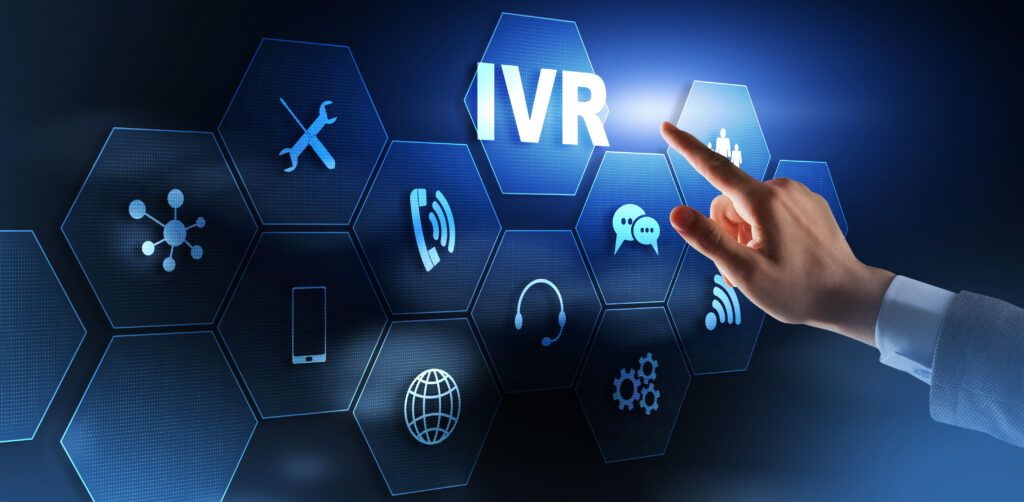Mastering CCaaS & IVR Reporting – The Keys to Success

Data is the cornerstone for solutions driving efficiency, enhancing customer experiences, and optimizing business strategies. Contact Centers are a perfect example with large volumes of data produced by the thousands of daily customer interactions through Interactive Virtual Agents (IVAs) in the voice and chat channels. Contact Center as a Service (CCaaS) environments are treasure troves of valuable information and companies rely on this data to maintain an effective platform. Successful CCaaS reporting solutions provide insights that guide better customer service and inform strategic decision-making across the organization.
Why CCaaS and IVR Reporting Matter
Through years of collaborating with our clients designing and implementing contact center strategies, Kenway embraces the crucial role of CCaaS and IVR reporting to drive the success of Contact Center solutions and business performance. Many times, when businesses devote their full attention to short-term implementation success, they forget the importance of reporting solutions. Leaving reporting for last results in an uphill battle, with the reporting team playing catch-up and delaying delivery. Effective delivery of Contact Center solutions should always incorporate reporting capability as part of the project plan from its inception.
While each business has a unique need for reporting and every solution is different, our team has seen the following benefits of CCaaS reporting when implementing a Contact Center strategy.
Operational Quality Assurance
Real-time observability is a crucial asset to swiftly identify and resolve performance issues within a Contact Center. By implementing alerts to automatically trigger and escalate based on pre-defined thresholds, organizations can seamlessly complement DevOps processes for their IT teams, and proactively resolve issues. Supervisors and site managers benefit from real-time dashboards, which are instrumental in monitoring and enhancing workforce performance. Using real-time data is pivotal in maintaining optimal load balancing and ensuring business continuity, especially during unexpected events. Common real-time metrics, such as call volume (inbound/outbound, answered, offered, transferred), call abandon rate, average wait time, and SLA fulfillment for each queue, provide comprehensive insights that empower organizations to make informed decisions and enhance overall operational efficiency.
IVR and Customer Experience Continuous Improvement
Effectively assessing the performance of IVRs and Contact Centers is a fundamental requirement that begins with establishing a clear definition of success prior to embarking on this journey. Well-defined reporting metrics support establishing benchmarks and defining end goals.
One crucial measurement for IVR is Containment Rate. Containment Rate gauges the percentage of customer calls handled by an IVR or an IVA without human intervention. Successful companies maintain high containment rates for common self-service functions, such as basic billing inquiries, FAQs, payments, password resets, and account updates. This metric gains depth when coupled with the self-service success rate, providing insights into the completion of self-service actions. Distinct Key Performance Indicators (KPIs) for self-service attempts and successes help differentiate between contained calls with completed self-service and premature hang-ups with unresolved issues, identifying opportunities for improving the overall customer experience.
Cost per contact stands out as a critical outcome measure for benchmarking against cost-reduction goals. Organizations that want to streamline their contact center cost can benefit from these metrics, as it evaluates labor, operational, and overhead costs per customer interaction through CCaaS solutions. A high cost per contact signals operational inefficiencies and resource allocation challenges, emphasizing the value of leveraging IVR self-service to enhance cost-effectiveness.
Intent Recognition Rates emerge as essential reporting metrics for understanding customer behaviors, especially when the contact center industry is moving rapidly towards AI-powered platforms. Low value in these rates highlight potential issues, such as missing mappings or poor prompting design. Leading reporting capabilities such as Salesforce Einstein and Genesys intent miner leverage AI technology to analyze calls, identify frequent user utterances, and suggest new intents for optimization.
Dynamic Forecasting and Predictive Event Handling
Data modeling and reporting are integral in enabling predictive call routing, scheduling, outbound campaign forecasting, and ultimately maximizing impact with minimal resource consumption. Among the key metrics assessed through reporting solutions, Agent Occupancy or Utility, helps evaluate the efficiency of an agent’s time utilization. Metrics such as concurrent interactions and percentage of occupied time allow organizations to find the delicate balance between resource efficiency and agent well-being.
Another commonly used metric is Average Handle Time (AHT), where IVR AHT measures total time customers spend within the automatic system and Agent AHT measures the time agents spend on interactions, encompassing talk time, hold time, and after-call work. When considering omnichannel solutions, AHT may vary significantly depending on the customer use case, whether it is chat, voice, or both. Effective reporting solutions break down Agent AHT into Average Wait Time (AWT), Average Talk Time (ATT), and After Call Work (ACW) Time. AWT is vital in customer experience and can be improved with optimal workforce management and advanced Automatic Call Distribution (ACD) solutions.
Interestingly, with robust self-service solutions, organizations may observe higher AHT. On the one hand, companies should expect IVR AHT to increase, because more customers are contained within the CCaaS environment to perform tasks and follow instructions to receive services they need. On the other hand, companies may also observe a higher Agent AHT, particularly in average talk time, because more simple requests are fulfilled within the IVR without an agent interaction. This strategic shift allows agents to focus on more personalized or complicated issues, leading to increased customer satisfaction, employee fulfillment and potential sales opportunities. Meanwhile, the total number of resources needed in the queue decreases, leading to effective cost reduction.
Interaction data is just the start of CCaaS and IVR reporting. Applying insights from customer interactions across the organization enhances customer service and business growth. Integrating customer satisfaction metrics, customer persona analytics, and market data enables companies to achieve greater return on investment by harnessing the vast amount of customer data and tailoring experiences.
Enhanced Customer Satisfaction
Using surveys to collect Net Promoter Score (NPS) and Customer Satisfaction Score (CSAT) is a widespread practice for many companies, often considered the gold standard. In CCaaS solutions, these scores can be captured through post-interaction surveys delivered over the phone, via email, SMS, or at the conclusion of online chat sessions. Leveraging AI, Customer Sentiment Analytics use Natural Language Processing (NLP) to analyze customer sentiment during interactions, providing valuable insights that complement traditional satisfaction measures. Integrating these metrics with Customer Relationship Management (CRM) systems enhances CCaaS reporting, taking it to a more sophisticated level.
Agent Engagement Metrics are a critical aspect of workforce management. This includes metrics like adherence to schedule, workforce turnover, training completion, and engagement scores. organizations can achieve a dual benefit of reducing labor costs and enhancing the overall quality of customer service through effective reporting and targeted interventions to boost agent engagement. This strategic approach not only improves operational efficiency but also contributes to a positive customer experience by ensuring a motivated and engaged agent workforce.
Insights-Driven Business Decisions for CCaaS
CCaaS serves as a critical interface directly connecting businesses with their customers. By harnessing the power of IVR data, account data, and retail insights, businesses can extract valuable information that supports informed decision-making, enhances customer loyalty, and ultimately contributes to top-line growth. Correctly understanding the purpose of your customer’s calls is a foundational element, providing insights into common issues, customer personas, and areas ripe for business opportunities.
Additionally, the ability to measure customer urgency is a vital aspect of the success of your CCaaS platform. Identifying and comprehending high-urgency calls enables prioritization and swift resolution. In essence, CCaaS not only serves as a communication bridge but also as a strategic tool for businesses to gain comprehensive insights, adapt their services, and provide exceptional customer experiences.
IVR & CCaaS Reporting Best Practices for Optimizing Contact Center Strategy
With thoughtful strategies and adherence to best practices, organizations can maximize the value of their CCaaS and IVR reporting capabilities. A strong CCaaS solution empowers businesses to transform their Contact Centers into customer delight and business growth. In the pursuit of business success, CCaaS and IVR reporting serve as indispensable allies, transforming contact centers from mere cost centers into engines of growth and customer advocacy. By empowering organizations to understand their customers, these tools pave the way for personalized interactions, proactive problem-solving, and unwavering customer satisfaction.
Our Contact Center experts recommend organizations consider the following best practices when approaching their reporting strategy:
- Align with Business Goals: Clearly define success criteria for each reporting use case to ensure alignment with overall business objectives.
- Define Data Semantics and Contracts: Think hard about the details. Establish clear data semantics and data contracts to avoid misinterpretations and ensure consistent communication across multiple teams.
- Design for Data Readiness: Incorporate reporting needs into the CCaaS solution design from the outset, ensuring the solution is “data-ready” from the start. Sample considerations include modularization, reduction of redundancy, consistency of variables and interdependencies, etc.
- Address security and compliance requirements in data collection, handling, and reporting.
- Support Data Infrastructure & Data Governance: Ensure the organizational infrastructure and data management solutions can handle data in transit and at rest. Establish standard Extract, Transform, and Load (ETL) procedures and ownership of data with centralized governance. Failing to do so could result in a siloed database with validation failures, misuse of data leading to decreased quality, as well as security and compliance breaches.
- CCaaS and IVR reporting will never be one-size-fits-all. Establish data capabilities to perform custom analytics based on customer base and business needs.
- Continuously apply insights gained from reporting to improve contact center solutions and agent training, establishing a positive feedback loop.
For more information on our thoughts and experiences in the Contact Center world, read our blog, The Dos and Don’ts of IVR Design and our case study, Seamless IVR Solutions Mastering System Conversion & Overcoming Challenges. If you have an IVR with more data than information, are struggling to evaluate your CCaaS solution, or simply have an opinion on our recommended metrics, we would like to hear from you at info@kenwayconsulting.com.







